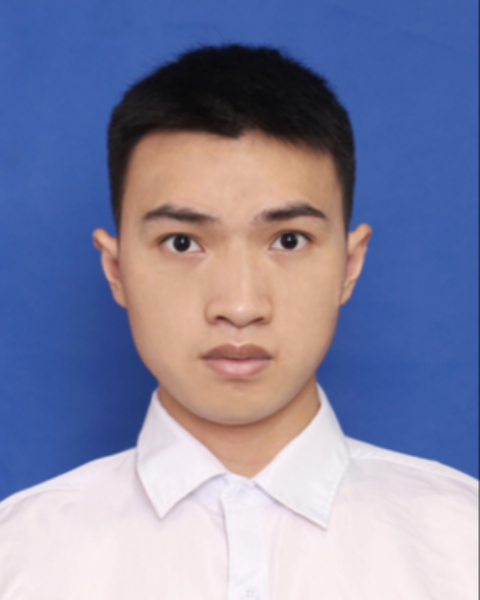PQA 02 - PQA 02 Physics Poster Q&A
2425 - A Novel Time-Varying Bi-Parametric Hyperelastic Bio-Mechanical Model for Personalized Lung Tumor Motion and Deformation
Sunday, September 29, 2024
4:45 PM - 6:00 PM ET
Location: Hall C
Screen: 23

Liang Tan, MS
Chongqing University Cancer Hospital
Shapingba, Chongqing
Presenter(s)
L. Tan1, W. Hu1, L. Chen1, H. Luo1, S. Li1, B. Feng1, X. Yang1, Y. Wu2, Y. Wang3, and F. Jin1; 1Radiation Physics Center, Chongqing University Cancer Hospital, Chongqing, China, 2College of Medicine, Chongqing University, Chongqing, China, 3Department of Radiation Oncology, Chongqing University Cancer Hospital & Chongqing Cancer Institute & Cancer Hospital, Chongqing, China
Purpose/Objective(s): One of the significant challenges in customizing treatment for lung cancer revolves around addressing the motion and deformation of lung tumors (LTMD) induced by respiration. To tackle this challenge, a sophisticated biomechanical model is introduced in this study. This model is founded upon dynamic Youngs modulus (E) and Poissons ratio (?), which are derived from meticulous analysis of 10-phase 4DCT images. Materials/
Methods: Twenty-seven patients diagnosed with lung cancer were included in this study. A 4DCT image was obtained for each patient and subsequently applied to a finite element geometric model. Surface displacement vector fields were acquired across different respiratory phases using an image registration technique and applied to the lung surface as a boundary condition. The material model for the lungs selected different hyperelastic material models based on volume change rates, while a linear elastic model was chosen for lung tumors. Elastic parameters for the lungs, such as E and ?, were obtained by minimizing tumor center of mass (TCM) motion and maximizing volume Dice similarity coefficient (DSC), with the dynamic evolution analyzed. The relationship between prediction error of the model and LTMD was also analyzed to assess the models accuracy. Additionally, an analysis was conducted on the relationship, as indicated by correlation coefficients (r), between LTMD and surface traction vector fields (STVFs) to explore the sources of lung tumor motion.
Results: High R2 values (=0.79) and low MSE (< 0.0027) indicate a good fit of the first-order Fourier function method to E and ? of the lungs. The average values for TCM motion and DSC are 1.7 ± 0.7 (mm) and 0.92 ± 0.02, respectively. There is a strong negative correlation between tumor deformation and simulated tumor motion error (r = -0.5116). Notably, during the inhalation process, there is a gradual increase in traction force values in both the central area of the lung bottom (in contact with the dome of the diaphragm) and the peripheral regions. We observed a significant positive correlation between STVFs and both true (r = 0.68) and simulated (r = 0.63) motion amplitudes. Conversely, a negative correlation was noted between STVFs and both true (r = -0.59) and simulated (r = -0.58) motion angles.
Conclusion: This innovative model demonstrates the applicability in capturing lung elastic parameters and accurately capturing lung tumor motion and deformation, presenting a potential alternative for personalized lung cancer treatment via non-invasive medical interventions.
Purpose/Objective(s): One of the significant challenges in customizing treatment for lung cancer revolves around addressing the motion and deformation of lung tumors (LTMD) induced by respiration. To tackle this challenge, a sophisticated biomechanical model is introduced in this study. This model is founded upon dynamic Youngs modulus (E) and Poissons ratio (?), which are derived from meticulous analysis of 10-phase 4DCT images. Materials/
Methods: Twenty-seven patients diagnosed with lung cancer were included in this study. A 4DCT image was obtained for each patient and subsequently applied to a finite element geometric model. Surface displacement vector fields were acquired across different respiratory phases using an image registration technique and applied to the lung surface as a boundary condition. The material model for the lungs selected different hyperelastic material models based on volume change rates, while a linear elastic model was chosen for lung tumors. Elastic parameters for the lungs, such as E and ?, were obtained by minimizing tumor center of mass (TCM) motion and maximizing volume Dice similarity coefficient (DSC), with the dynamic evolution analyzed. The relationship between prediction error of the model and LTMD was also analyzed to assess the models accuracy. Additionally, an analysis was conducted on the relationship, as indicated by correlation coefficients (r), between LTMD and surface traction vector fields (STVFs) to explore the sources of lung tumor motion.
Results: High R2 values (=0.79) and low MSE (< 0.0027) indicate a good fit of the first-order Fourier function method to E and ? of the lungs. The average values for TCM motion and DSC are 1.7 ± 0.7 (mm) and 0.92 ± 0.02, respectively. There is a strong negative correlation between tumor deformation and simulated tumor motion error (r = -0.5116). Notably, during the inhalation process, there is a gradual increase in traction force values in both the central area of the lung bottom (in contact with the dome of the diaphragm) and the peripheral regions. We observed a significant positive correlation between STVFs and both true (r = 0.68) and simulated (r = 0.63) motion amplitudes. Conversely, a negative correlation was noted between STVFs and both true (r = -0.59) and simulated (r = -0.58) motion angles.
Conclusion: This innovative model demonstrates the applicability in capturing lung elastic parameters and accurately capturing lung tumor motion and deformation, presenting a potential alternative for personalized lung cancer treatment via non-invasive medical interventions.
